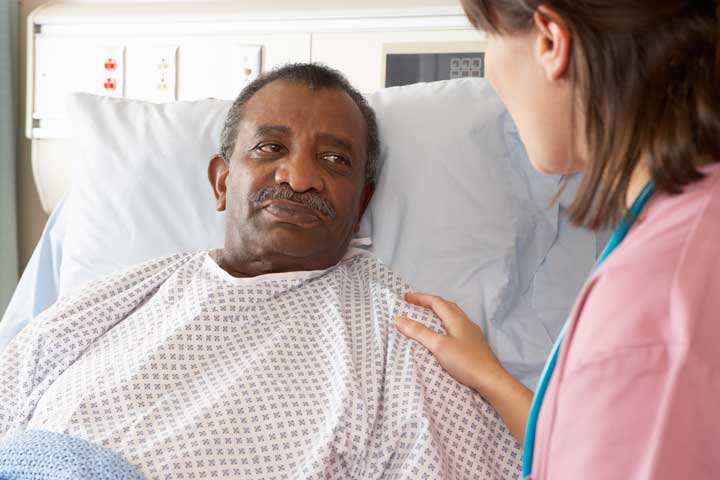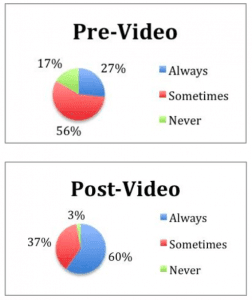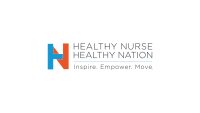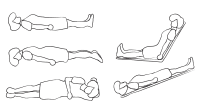Making the evidence-based method a standard of care builds nurse confidence and improves patient education
Takeaways:
- The teach-back method is an evidence-based intervention, but it’s poorly utilized in current nursing practice.
- Gaps in nurse knowledge may be why teach-back isn’t routinely used.
- Effective interpersonal communication between health professionals and patients is fundamental for safe, quality care.
Communication failures are commonly cited after adverse health events and in complaints about healthcare. How health professionals, including nurses, provide information can help patients understand their illness or condition and ensure they know how to manage it. The teach-back method is one tool that should be used more often to achieve those goals. However, many nurses may be unaware of it or aren’t confident using it.
In an effort to encourage nurses to use the teach-back method when educating patients, we conducted a literature review on the topic of patient education and health literacy, gauged nurses’ familiarity with teach-back, assessed barriers to its use, and developed an education plan to increase implementation.
High cost of misunderstanding
The cost of inadequate education and misunderstanding medical information is estimated at $73 billion annually, indicating that many patients leave medical encounters with a poor understanding of their disease and recommended treatments. The nursing literature offers surprisingly few recommendations about how to solve this problem. Many healthcare communication tools include assessments to confirm that patients understand what they’ve been taught, but few details exist about how that assessment should occur.
Barriers to effective communication
Patients and nurses encounter barriers to effective communication. Our literature review failed to identify standardized education for preparing nurses to successfully teach patients. Without a standard, many nurses’ lack confidence using teaching skills, such as active listening. In addition, nurses frequently report time as a barrier to thorough patient education.
From the patient perspective, environmental conditions (such as crowded care areas and limited facilities to provide education) have been identified as barriers to learning. Interruptions, time constraints, and poor healthcare professional teaching skills contribute to patients’ difficulty understanding and retaining health information. Physical barriers—such as noise, lack of privacy, and pain—also impair effective nurse-patient communication.
Defining terms
The teach-back method is an evidence–based, patient-centered intervention that promotes health literacy, patient engagement and adherence, safety, and quality, using a universal precaution approach.
Health literacy is the ultimate goal of patient education and is defined as having the skills, knowledge, motivation, and capacity to access, understand, appraise, and apply information to make effective decisions and take appropriate action about health and healthcare.
Patients are more receptive and satisfied with their education and care when a patient-centered model is used. It provides care that’s respectful of and responsive to patient preferences so that individual values guide all clinical decisions.
The universal precaution approach ensures clear communication with patients through the design and distribution of health information materials that are easy to understand and act upon.
Ten elements of competence
Successful implementation of the teach-back method requires using the ten elements of competence (http://bit.ly/2VJiE4j). Start with a caring attitude and tone of voice, body language awareness, and frequent eye contact to increase patient receptiveness to learning. After providing information in plain language, ask patients to explain, in their own words, what they learned. Stay nonjudgmental and use open-ended questions, especially when gaps in knowledge are apparent. Asking “yes” or “no” questions doesn’t encourage continued dialogue and may make patients feel ashamed to say that they don’t understand the information, limiting the potential for a teachable moment and preventing you from identifying information that needs repetition or reinforcement. Use supportive materials (such as pamphlets, reminder cards, and audio-visual media) to supplement patient education, but make sure it’s in plain language and appropriate for the patient’s condition and cognitive level.
Take ownership of your practice by telling patients that if they don’t understand their health information, it’s your responsibility to work with them until they do. Repeat the teach-back process until patients can demonstrate competence in their health information. Document use of the method and its results in the education section of patients’ electronic health record to help with future research and correlate using the method with patient outcomes and unit metrics to validate its effectiveness.
The teach-back project
We used the Iowa Model of Evidenced–Based Practice to guide our project design. We found that the literature supports the value of implementing the teach-back method into routine nursing practice. However, underutilization of teach-back is a result of not having a universal curriculum for instructing nurses how to teach patients, and a lack of confidence in implementing the method as a standard of nursing care. We determined that current practice doesn’t reflect what evidence shows us is best practice for patient education. (See A problem to solve.)
A problem to solveProblem: Teach-back is an evidence-based patient education tool that ensures patients understand information about their health. Lack of standardized education, poor communication skills, limited nursing time, weak organizational support, and low research use in practice contribute to ineffective patient education. Purpose: Practicing nurses who attend the University of Hartford nursing programs were surveyed to determine if they were familiar with teach-back for patient education and to assess their confidence in using the method. Approach: Using a cross sectional approach, the nurses were surveyed before and after viewing a brief educational video demonstrating teach-back in clinical practice. Outcome: Thirty-six nurses participated in the survey. The likelihood that nurses would use teach-back in practice increased 33% after watching the 5-minute video demonstration. Implications: The results suggest that brief instructional bursts may increase nurses’ knowledge and confidence in using evidence-based tools to instruct patients about their health and care. Studies indicate patients who have correctly understood their health information will have better outcomes. |
We sought to understand if and how the teach-back method is used by practicing nurses, how confident they were in their ability to implement the method, and to identify knowledge gaps and barriers preventing its use as a standard of practice. We conducted data analysis after project completion to determine how to assimilate the teach-back method into a standard of care for patient education. Given that our sample population was made up of practicing nurses who also were students, we anticipated that this project would inspire future research projects and evidenced–based practice changes.
Project design
Our project’s target population was direct-care RNs currently enrolled in the University of Hartford nursing programs. Using a brief questionnaire, we surveyed respondents about their current education level and practice area, knowledge of the teach-back method, and confidence in using the method during patient encounters. Participants watched a brief video (youtube.com/watch?v=DcfPhZu2bi4) demonstrating teach-back in use. Total time for the survey and video was between 10 and 15 minutes. The survey evaluated how likely participants would be to integrate the teach-back method into practice before and after the training video.
Approval for disseminating the questionnaire was granted by the nursing programs director. Participation was voluntary and consent was assumed upon completing the survey. To keep student information confidential, a link to the survey and video was disseminated via email by the associate professor of nursing. Participants completed the survey online, giving us access to real–time results.
Findings
After a brief training on the teach-back method, nurses who believed they were using the teach-back method correctly weren’t using it as effectively as they thought they were. The nurses’ responses also indicated that some lacked confidence in their ability to implement the method effectively.
We identified the need to close knowledge gaps, create an educational standard for using evidence–based tools in practice, and build nurses’ confidence in their ability to effectively implement teach-back as a standard of care for every patient encounter. (See Confidence evaluation.)
Confidence evaluationNurses’ knowledge of the teach-back method and their confidence in using it was rated before and after watching an instructional video. They were asked how likely they were to integrate the method into their practice. They could reply “always,” “sometimes,” or “never.”
|
Analysis
Our analysis focused on managing obstacles, drawing conclusions from the data, and identifying strategies that affect nursing practice. Receiving adequate responses is a common obstacle to any survey-based research. Our goal was to have a minimum of 75% of the enrolled nursing students participate; ultimately, we received a total of 36 responses out of 150 requests for participants delivered via listserv email.
We were able to analyze the data and draw conclusions to identify strategies that will improve the education and confidence of nurses to implement the teach-back method. This may help aid in transitioning the method from an option in practice to a standard of care, an outcome that would improve the safety of patient education as well as the confidence of nurses to execute this crucial task.
Every patient, every time
The teach-back method is an underused but effective tool to improve patients’ health literacy and ultimately their health outcomes. When the method is a consistent standard of care—used with every patient every time—nurses will gain confidence in their skills. Further investigation is needed to identify strategies that will eliminate the barriers to using evidence–based tools for patient education.
At the time this article was written, Donna L. Denault was a diabetes nurse educator at the Hospital of Central Connecticut in New Britain. She currently works as a certified diabetes nurse educator at ProHealth Physicians in Farmington, Connecticut. Sarah M. Wilcox is a clinical case manager at Middlesex Hospital Homecare in Middletown, Connecticut. Karen Breda is an associate professor of nursing, Karen V. Duhamel is an assistant clinical nursing professor, and Susan Eichar is a professor at the University of Hartford in West Hartford, Connecticut.
EDITORS NOTE: The authors grant permission for using the tool in the article provided they are credited as the source.
Selected references
Ajzen I. Perceived behavioral control, self-efficacy, locus of control, and the theory of planned behavior. J Appl Soc Psychol. 2002;32(4):665-83.
Bergh AL, Persson E, Karlsson J, Friberg F. Registered nurses’ perceptions of conditions for patient education—Focusing on aspects of competence. Scand J Caring Sci. 2014;28(3):523-36.
Dontje KJ. Evidence-based practice: Understanding the process. Topics in Advanced Practice Nursing eJournal. 2007;7(4).
Fidyk L, Ventura K, Green K. Teaching nurses how to teach: Strategies to enhance the quality of patient education. J Nurses Prof Dev. 2014;30(5):248-53.
Ibrahim AF, Tawfik FM, Akel DT. Nurse communication in health education: Patients’ perspective. Clin Nurs Stud. 2015;3(4):94.
Jager AJ, Wynia MK. Who gets a teach-back? Patient-reported incidence of experiencing a teach-back. J Health Commun. 2012;17(Suppl3):294-302.
Johnson A. Health literacy: How nurses can make a difference. Aust J Adv Nurs. 2015;33(2):20-7.
Kemp EC, Floyd MR, McCord-Duncan E, Lang F. Patients prefer the method of “tell back-collaborative inquiry” to assess understanding of medical information. J Am Board Fam Med. 2008;21(1):24-30.
Schillinger D, Piette J, Grumbach K, et al. Closing the loop: Physician communication with diabetic patients who have low health literacy. Arch Intern Med. 2003;163(1):83–90.




















1 Comment.
My name is Michelle Garon. I am currently working on project planning for my DNP and am focusing my study on how well nurses feel about using the teach-back method. May I use the video on this web page for a resource for nurses?
Thanks,
Michelle Garon